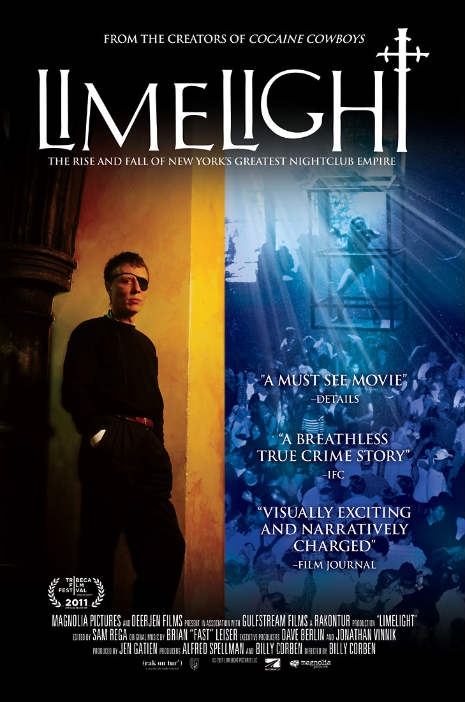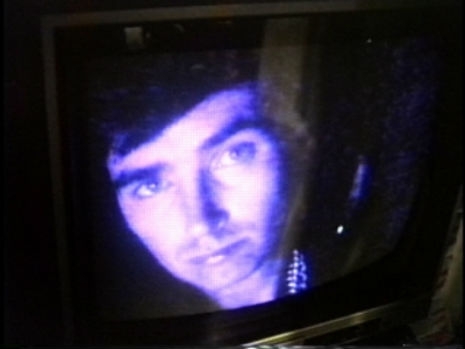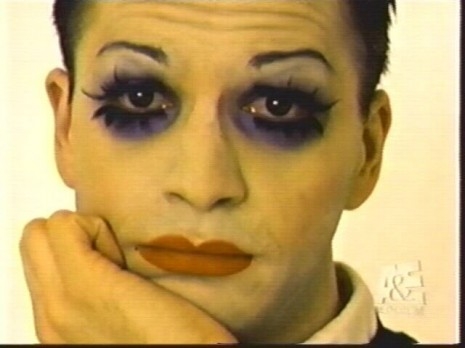
According to Steve Lewis’s blog at Black Book, Michael Alig, the notorious “club kid murderer” and “Party Monster” (played by Macaulay Culkin in the 2003 cult film of the same name) is about to be paroled. Alig pleaded guilty to manslaughter in the death of drug dealer Angel Melendez in 1996 and was sentenced to ten to twenty years in prison.
Club kid founder Michael Alig is to be released from jail on May 5, according to sources in the know. A check of official prison site by Alig friend Victor Corona confirmed the news. Alig, of course, has been serving time for the murder and dismemberment of drug dealer Angel Melendez on March 17,1996. He has been eligible for parole since 2006, but has been denied until now. The release, although not a surprise, has sent waves through a community who knew him and loved him, as well as those who knew him and hated him. He will be staying with a close friend, and has been recruited for creative jobs by many. His transition to the real world will be eased by a support group who, for the most part, have stuck by him for more than a decade and a half. Michael has never used a computer or cellphone but he has remained keenly aware of the world we live in. There is no chance that he will return to clubs as a way of life, but he will paint and write, and as always, try to impact the way we think.
The reason there’s “no chance” that Alig would return to club life is that there isn’t any to return to—at least nothing even remotely resembling the scene he would remember from the 90s. Forget about computers and cell phones, New York City itself will be practically unrecognizable to him. The state of mind once known as “downtown” simply doesn’t exist anymore. It’s but a faded memory. The real estate has long since moved on. Last I heard Limelight was some sort of flea market. I wonder how long it will take before one of the cable television networks gives the green-light to Michael Alig: Reality Sets In ?
I was for many years Michael’s friend. Like so many others, I left him behind when drugs and power created a “Party Monster.” We reconnected in recent years, and during my visits to him in prison I observed the Michael Alig that I loved—the Alig prior the downfall. I believe he is ready to enter the world, and that reentering will be a good thing. No one, no act, no time, no hatred will bring back Angel, but Michael has served a great deal of his adult life in a bad place. I believe he has been rehabilitated. I believe he is forever remorseful and I look forward to his redux. To those who say nay, I respect that, but hope chances are given, and that we can move on. It is a time to remember Angel and reflect on the meaning of life. For me, forgiveness is part of it.
I met Michael Alig at the Danceteria nightclub on the very first day that I moved to NYC at the end of 1984. Later that night he got me and several other people into a celebrity-studded opening party at AREA. After asking if I wanted to meet Andy Warhol—implying that he knew him—Michael proceeded to shove me from behind, full force with both arms right into the Pope of Pop. I was completely flummoxed and tongue-tied, but Warhol had seen Michael push me and directed his annoyance towards him and not at me.
Michael was smart, charming and funny when he was young, but frankly, as my ignominious “introduction” to Andy Warhol demonstrated, he was also untrustworthy. And erratic. He could be really thoughtful—he alerted me to an apartment for rent that I ended up leasing, for instance—but he also stole several items from that very same apartment! When confronted—I literally shoved him up against the wall in Limelight by his neck and threatened to beat him up—he returned my stuff, but lied and blamed his boyfriend—who had never even been in that place. That was Michael before he disappeared down a permanant K-hole.
To be sure, the fucked up, drugged-out decadent person portrayed in Party Monster, well, that movie is damned accurate, let me tell you. (The filmmakers, Fenton Bailey and Randy Barbato knew Michael quite well themselves, and even the layout of the furniture in their movie conforms exactly to my own memory of two of his apartments.) Having said that, I always maintained a level of sympathy and begrudging affection for Michael, even during his downward spiral, because he just seemed so needy and desperate for attention. There was a bit of a “Lost Boy” or Peter Pan quality to him, and I recall him recounting a conversation that his divorced parents were having about his tuition to Fordham when his father, balking at the costs, apparently said “Look, I love the kid, but I don’t love him that much.” This speaks volumes about where Michael ended up, probably. That all-consuming need for attention was both his genius and his undoing.
A strange bit of “true crime” trivia is that Michael was the first person I knew who had a VCR. His was a Betamax and he had just two videos and both were directed by Herschell Gordon Lewis: 2000 Maniacs and Blood Feast.
Just sayin’.

Below, the 1998 Party Monster “shockumentary” that preceded the 2003 feature film:









